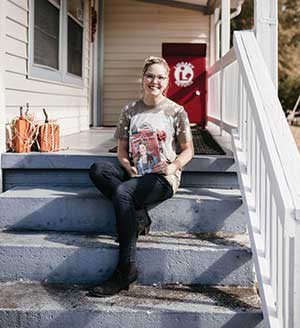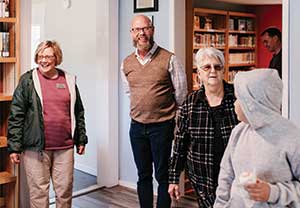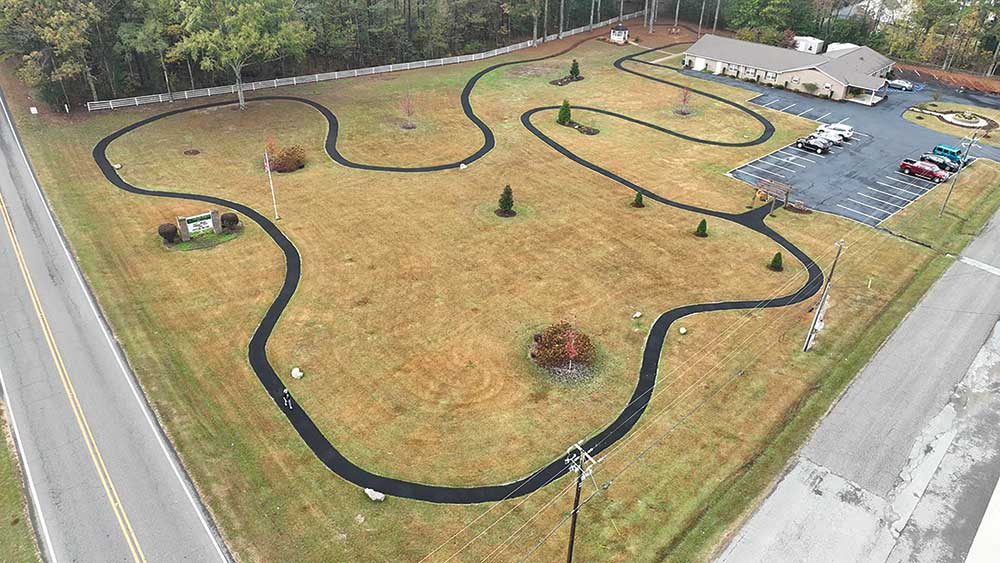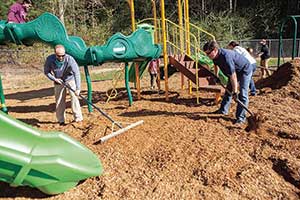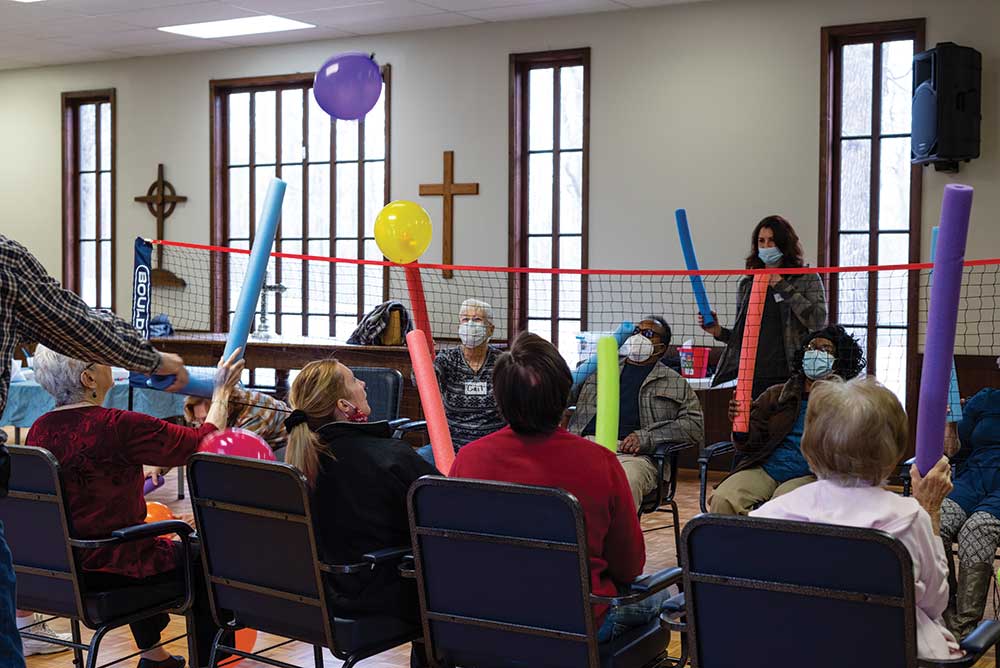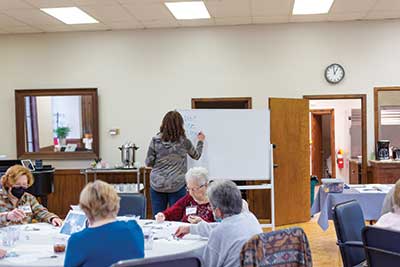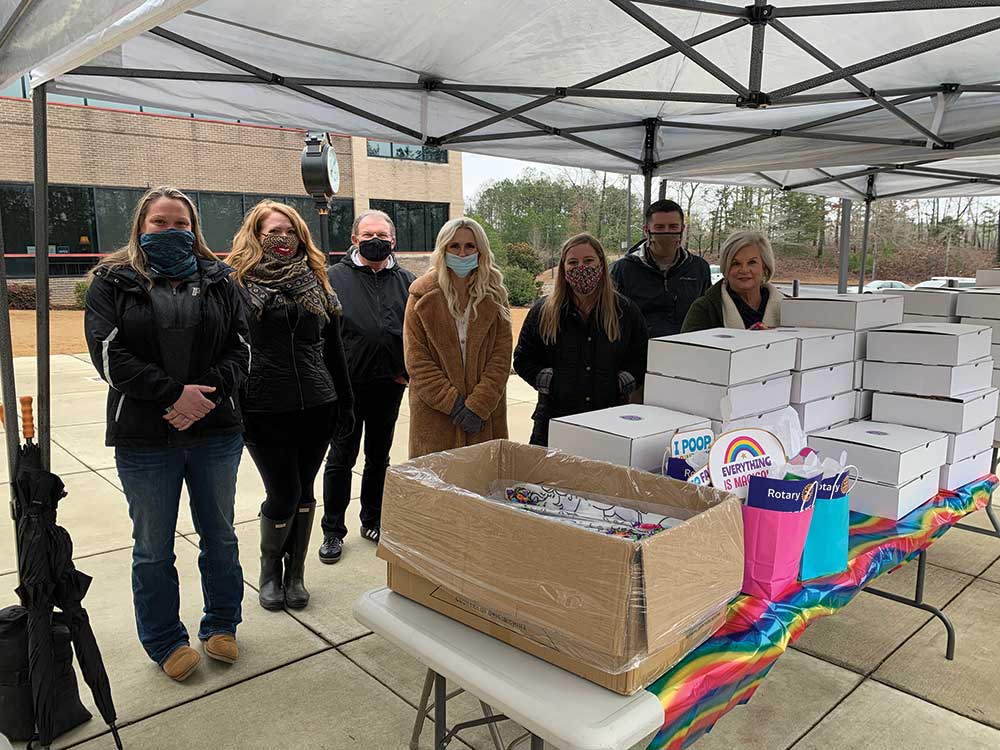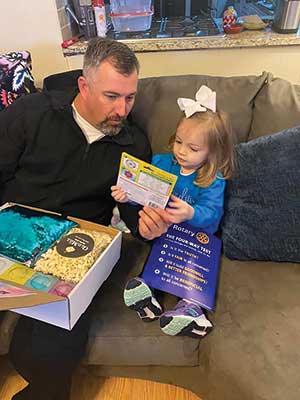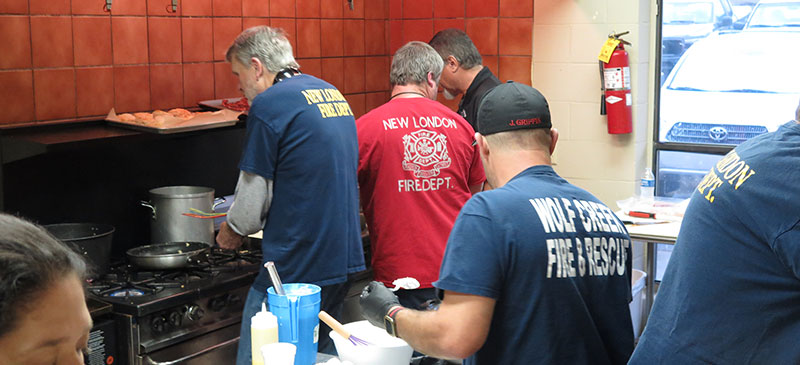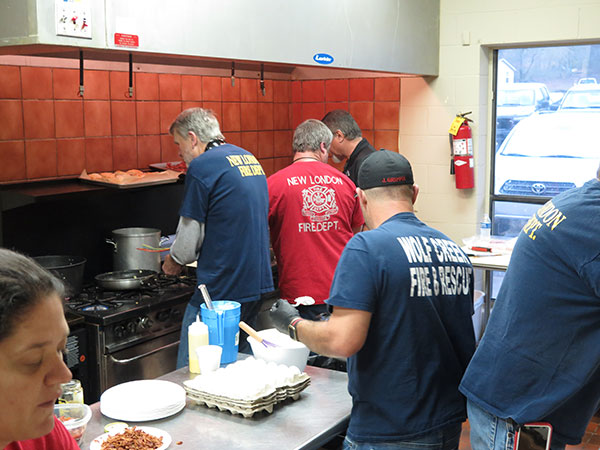Roster, programs growing – even a llama carries a card
Story by Elaine Hobson Miller
Photos by Meghan Frondorf
When the Steele Public Library held its grand reopening celebration, it gained an unexpected patron. Her name is Chenille Borg, and she gives the library the rare distinction of having a llama as a member.
If you don’t believe she’s a bonafide, card-carrying member, see her picture accompanying this article. Her owner, Steele Town Councilwoman Nancy Miller-Borg, is standing beside her, card in hand.
Her membership is all in fun, and Miller-Borg, the library board, librarian Kaitlyn Siewert and town officials hope it will help bring attention to the newly-remodeled facility and all it has to offer.
“The library was closed for a month in the spring while we underwent some remodeling, including new floors in the main room and a new interior paint job,” said Siewert. The reopening celebration had to wait a few months, though, for a few finishing touches inside and outside the building, and for some new shelving to be installed. Kaitlyn herself is fairly new, too, having come on board July 18, 2022.
“We’re hoping that the new environment will be inviting and will bring in more patrons,” says Miller-Borg, a library patron and promoter. The library also is known as the Jane Battles Brown Memorial Library, after its founder. “That’s its official name, but we’re using Steele Public Library so town folks will get to know it better,” says Karen Bowen, vice chair of the library board. She knew Brown, who was affectionately called, “Janie.”
“She worked tirelessly to start the library, much of it without pay,” Bowen says of the library’s founder. “She has been dead about 48 years, and we’ve had several paid librarians since then. Right before Kaitlyn, it was Lynda Fann.”
Brown opened Steele’s first library in a small storage building next door to a gas station at the corner of US 11 and Steele Station Road, according to Bowen. “Next, it was in the gas station building itself,” she says.
Some folks believe the opening was in the early 1960s, others think it was the late 1960s. Ironically, town records are stored in the very building that housed the first library, and no one has gone through them to validate the precise date. The library moved to its current location after the town purchased the house it’s in at 78 Hillview Street, which is right up the hill from its original building, in April 2003. Library board members, in addition to Bowen, include Hannah Parris, chair; Brandy Dunn, RoseMary Hyatt and Esther Dunn.
When Siewert became librarian, she began the laborious task of culling the library cards to remove those that hadn’t been active in five years or more. With the help of Paula Ballard at Ashville’s McCain Memorial Public Library, the cards went from about 8,000 to 685 adults and 254 children, for a grand total of 939. By the end of the grand reopening day, when 26 more signed up (not counting Chenille), that total had reached 965. As of mid-December, it was at 975 and climbing.
Siewert has several new programs in the works, including a free project-supply closet (posters, markers, tape, etc.), a summer reading program for children, and a crochet group. The latter is a “coming together” of crocheters, rather than teaching sessions, but experienced crocheters will be on hand to help beginners. They began in January meeting every Tuesday from 9:30 a.m. – 11 a.m. Then on Feb. 4, the library will host a “Bring Your Child to the Library Day” from 8:30 a.m. until 4 p.m. There will be face painting, sidewalk chalk drawing, refreshments and other activities.
Siewert, whom Karen Bowen calls “Janie 2.0” because of the tremendous work she is putting into her job,was in the medical field for 10 years before heading up the Steele Public Library. “I wanted something outside that field, something I could grow into and be helpful,” she says. “So far, this job has been beyond my expectations. It’s the job I never knew I needed. It doesn’t even feel like a job.”
Editor’s Note: The Steele Public/Jane Battles Brown Memorial Library is open Monday through Thursday. Its winter hours are from 8:30 a.m. – 4:00 p.m., while the rest of the year its hours are 9 a.m. until 4:30 p.m.












